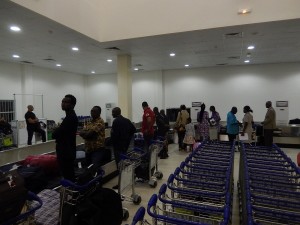Sam and Katie here,
Today marks our half way point in Benin. Everyday is a new adventure, which brings new stories and encounters with the people we meet. Yesterday our group went to the village of Zoungbomey, which means “In the big forest”. It rained all night long and unlike the U.S., the streets here are made out of dirt. Between avoiding giant pot holes and mini lakes of water, it made driving very difficult. Our driver is driving 14 people around in a white Toyota bus that clinks at any bump in the road. Katie was getting ready to push the van in the mud when our driver got stuck on the way to the village. Luckily, he knew what he was doing and we didn’t have to leave the van. To say the least, our bus driver is a CHAMP! Although a couple of times, Katie and I swore we were in the ditch on the side of the road.
When we finally made it to the village, we were greeted by around 30 children ranging from babies to teenagers. There was a language barrier, but that didn’t stop us from playing soccer, taking pictures, or simply holding hands. We were surprised at how welcomed we were. These kids were so genuinely happy to see us, it was all our group could talk about for the rest of the night. As our van departed the village, the kids chased us until we were out of sight.
Even though we are half way across the world and did not speak their language, our experience reminded us how connected we all are in one way or another. We all crave love, friendship, and connection. Tomorrow we are going to an artisan market and visiting some neighboring farms. We are excited to see what tomorrow has in store for us!
















